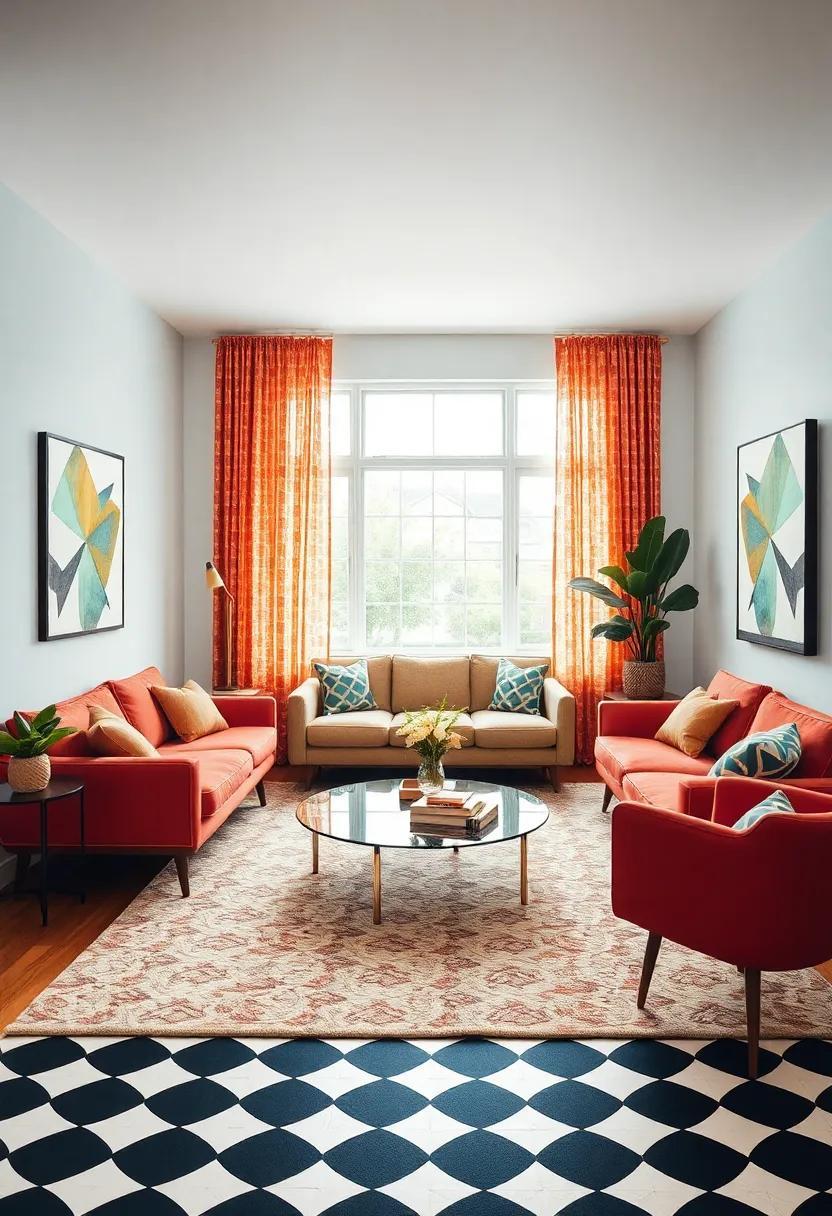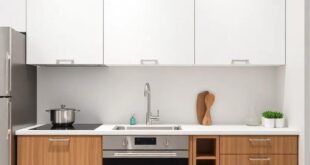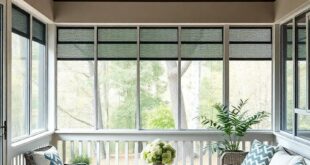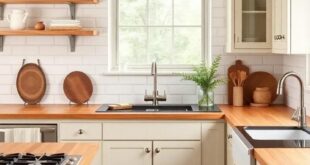in the realm of interior design, few styles invoke as much nostalgia and artistic flair as mid-century modern aesthetics. Characterized by clean lines, organic forms, and a revolutionary take on functionality, mid-century living rooms beckon a revival that pays homage to their vibrant origins while infusing fresh energy into contemporary spaces.As we navigate a world craving individuality and warmth, bold patterns emerge as the perfect vehicle for bringing these storied interiors back to life. In this article, we explore the art of embracing striking designs—think geometric prints, vibrant colors, and unexpected textures—to create living rooms that are not just spaces, but expressions of personality and style. Join us as we journey through the myriad ways to blend the timeless charm of mid-century design with modern sensibilities, celebrating the beauty of bold patterns that dare to redefine our everyday environments.
Embracing Geometric Shapes in Mid-Century Design for a Timeless Look
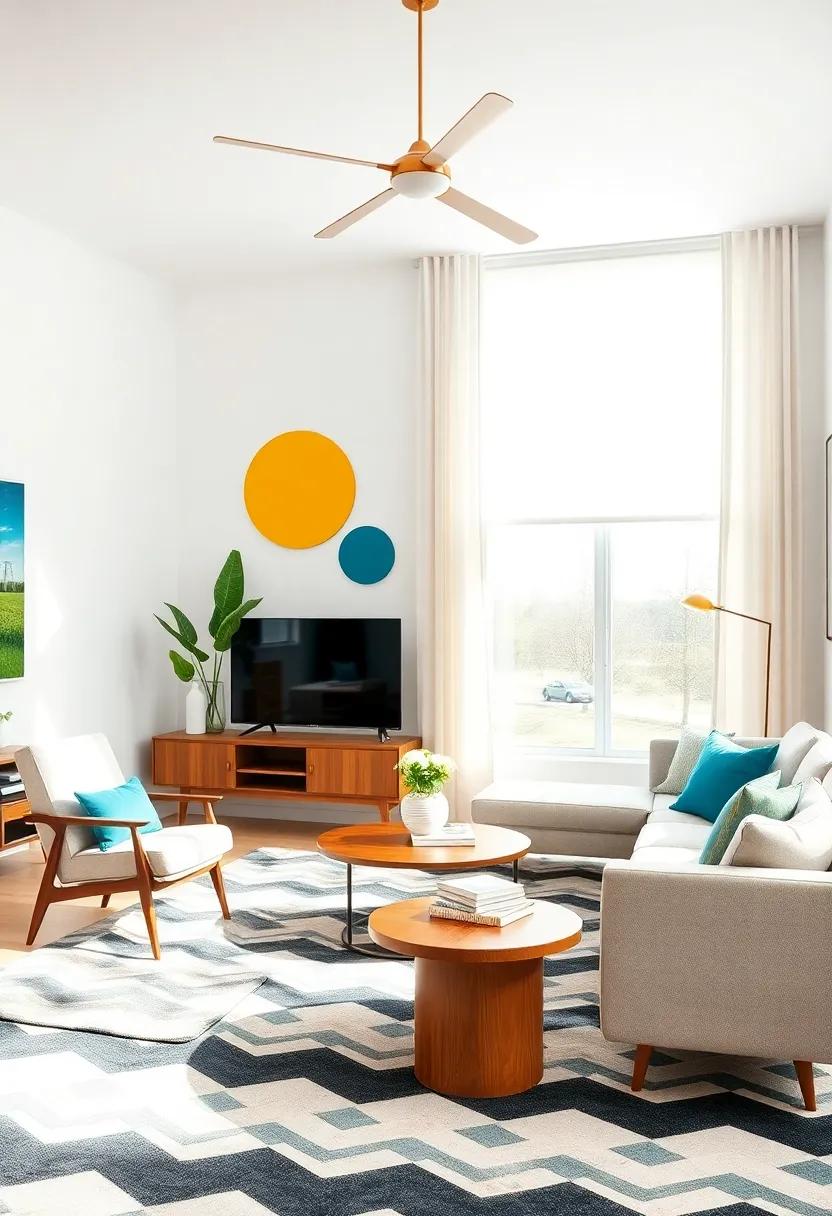
In the world of mid-century design, geometric shapes serve as the heartbeat of a space, encapsulating an era where creativity met functionality. Triangles, circles, and rectangles dance together to form bold, dynamic layouts that instantly draw the eye.Furniture pieces adorned with these patterns often feature vibrant color palettes that evoke a sense of warmth and nostalgia, creating a perfect backdrop for any living room.Selected wisely,these shapes can be integrated into everything from upholstery to area rugs,ensuring that the room feels cohesive yet stylishly eclectic.
To make the moast of geometric designs,consider showcasing a mix of patterns and textures. Pair a starburst-patterned sofa with striped throw pillows for a playful contrast, or juxtapose a solid coffee table with an intricate hexagonal rug. When layering these elements, itS crucial to achieve a balance; here are some tips for successful integration:
- Choose a color scheme to unify shapes.
- Vary the scale of patterns to create visual interest.
- Incorporate accessories like art pieces and lighting fixtures that highlight the geometric theme.
| Shape | Color Pairing | Ideal Use |
|---|---|---|
| Triangle | Mustard Yellow & Teal Blue | Pillows & Wall Art |
| Circle | Coral & White | Rugs & Decorative Accents |
| Rectangle | Charcoal & Blush Pink | Furniture & Tables |
The Power of Color: Choosing Bold Hues to Revive Vintage Living Spaces
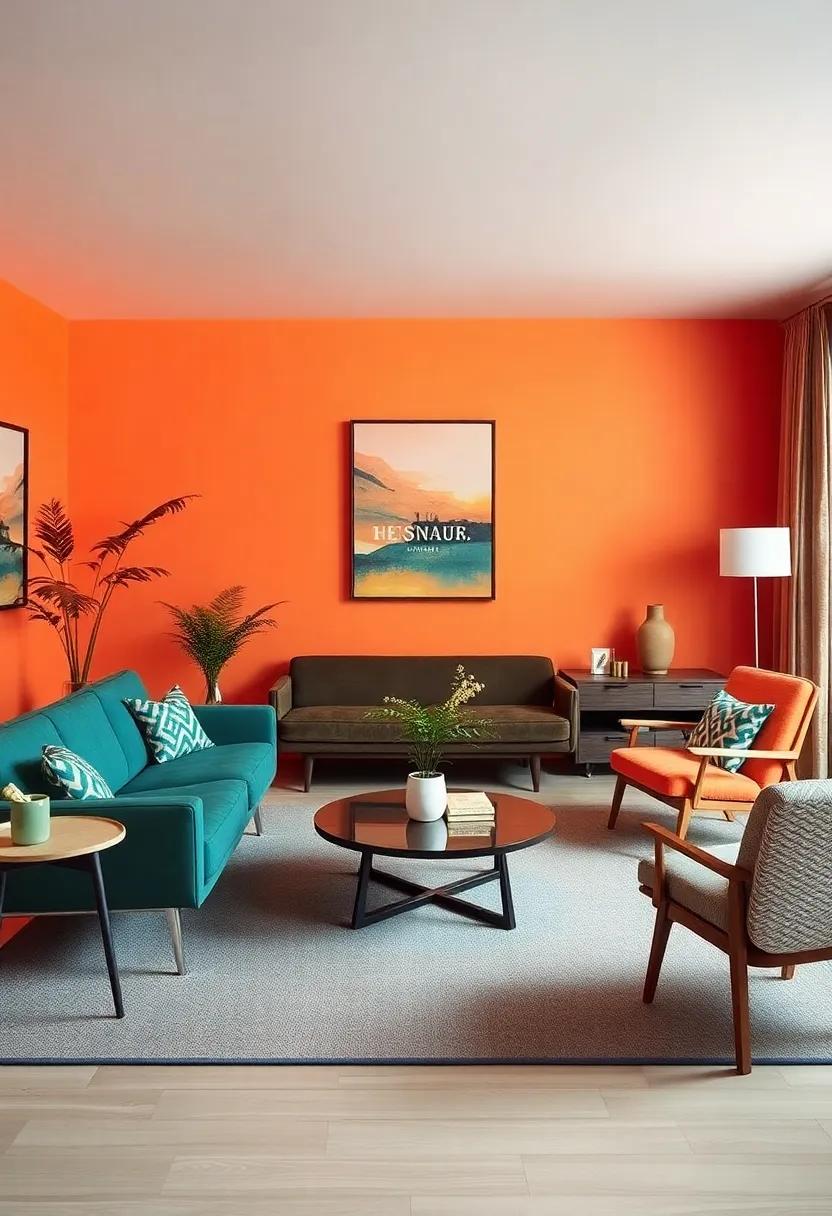
Reviving vintage living spaces can be as captivating as it is rewarding, especially when you harness the transformative power of color.Bold hues can infuse life into a mid-century living room, enhancing its unique architectural features while creating an atmosphere that feels fresh and inviting. Consider incorporating colors like emerald green, mustard yellow, and rich terracotta, which not only honor the palette of the era but also serve as stunning focal points. To further elevate your decor,mix these vibrant shades with complementary neutrals,such as soft beiges and warm whites,allowing the bold accents to stand out while maintaining a cohesive look.
Don’t shy away from experimenting with vibrant patterns, as thay can seamlessly blend with bold colors to inject character into your space. Think geometric shapes, playful florals, and retro abstracts that reflect the exuberance of mid-century design. A beautifully crafted area rug or statement cushions can introduce these patterns without overwhelming the room. For an effective visual strategy,consider the following elements when mixing colors and patterns:
- Balance: Pair bold colors with softer tones to avoid clashing.
- Layering: Incorporate patterns through textiles, such as curtains and throws, for a harmonious blend.
- Focal Points: Create a central piece, like a vibrant art piece, to anchor the space.
| Color Scheme | Recommended Patterns |
|---|---|
| Emerald Green with Cream | Geometric |
| Mustard Yellow with Gray | Floral |
| Terracotta with White | Abstract |
Focal Points: Creating Visual Anchors with Statement Furniture Pieces
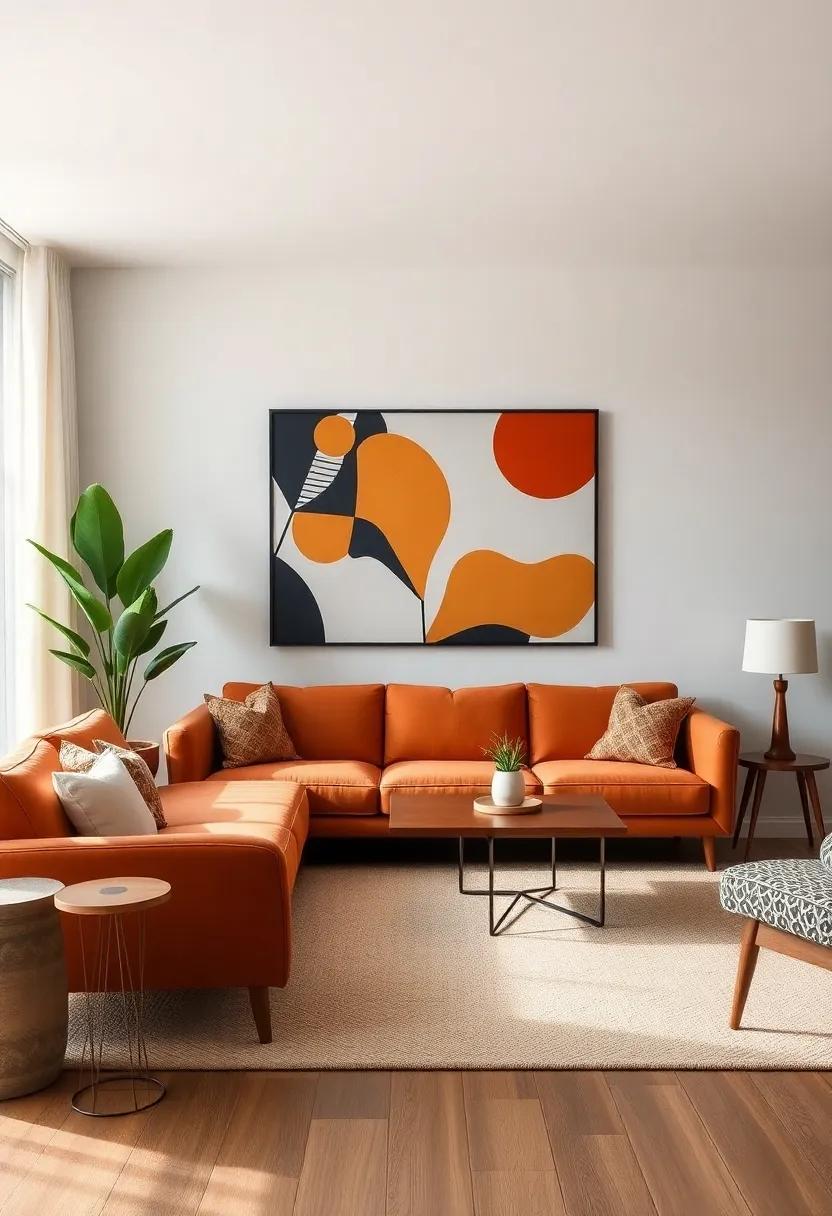
integrating statement furniture pieces into your mid-century living room can transform the entire space, infusing it with personality and flair. These bold selections serve as visual anchors that not only define the atmosphere but also highlight the design ethos of the era. Choose furniture that showcases distinctive shapes and vibrant colors, ensuring they complement the lively patterns often found in mid-century textiles. Consider including:
- Iconic chairs like the Eames Lounge or the Tulip chair that elevate both comfort and style.
- Bold coffee tables with unique silhouettes, perhaps in a rich wood tone or with glass elements.
- Artistic credenzas that offer both function and a stunning focal point for your decor.
Accent your space further by combining these standout pieces with complementary décor elements.Accessories like colorful vases or abstract sculptures can enhance the visual interest without overwhelming the design. additionally, consider creating a balanced layout that allows each statement piece to shine, encouraging a harmonious flow throughout the room.Below is a simple table to illustrate how different types of statement furniture can contribute to the overall aesthetics:
| Furniture Type | Characteristics | Suggested pairings |
|---|---|---|
| Accent Chairs | Bold shapes, vibrant colors | Patterned cushions, area rugs |
| Coffee Tables | Unique forms, mixed materials | Neu Mid-century sofas, decorative trays |
| Sideboards | Stylish finishes, functional storage | Art pieces, matching dining sets |
Textile Richness: Layering Fabrics for Depth and Comfort in Your Living Room
To create a visually stunning and deeply comfortable living room, layering fabrics is essential in achieving a harmonious blend of warmth and style. Begin by combining diverse textures such as velvet, cotton, and linen, which not only add tactile interest but also create a rich sensory experience. Consider using a bold patterned area rug as the foundation; it can serve as a statement piece that ties together the various elements of the room. From there, incorporate accent pillows in contrasting yet complementary designs to enhance the visual depth without overwhelming the space.
Another key strategy is to include soft, flowing drapes that filter light gently into the room while introducing a layering effect that encourages coziness. Choose fabrics in vibrant colors or eye-catching prints that celebrate the essence of mid-century style. When arranging your furniture, remember to balance the arrangement with a mix of materials, showcasing pieces made from wood, metal, and glass. This thoughtful approach not only brings a modern flair but ensures a comfortable environment that invites relaxation and conversation.
Artful Accents: Incorporating Retro Artwork to Enhance Room Atmosphere
To infuse a room with vibrant energy and nostalgia, incorporating retro artwork can be transformational. By selecting pieces that feature bold patterns and colors typical of the mid-century aesthetic, you can create a dynamic focal point that draws the eye. consider artwork that embodies the essence of the era, such as:
- Geometric Shapes: Works that play with intersecting lines and vivid colors can add a lively touch.
- Abstract Forms: Pieces featuring organic shapes often reflect the creativity of mid-century artists.
- Pop Art Influences: Integrating classic pop art can provide a fun twist and a sense of playful irony.
Placement is key when displaying retro artwork to maximize its impact. Create a gallery wall that utilizes different-sized frames to build visual interest, or choose a single large piece as a statement work above a sofa or console table. To enhance the scene, consider pairing these artworks with furniture or accessories that echo similar colors or motifs, such as:
| Furniture Style | Complementary Element |
|---|---|
| Teak Side Table | Ceramic Vases with Bold Patterns |
| Iconic Lounge Chair | Throw pillows in retro Fabrics |
| Vintage Credenza | Colorful Abstract Sculpture |
Playful patterns: Mixing and Matching for an Eclectic Yet Cohesive Style
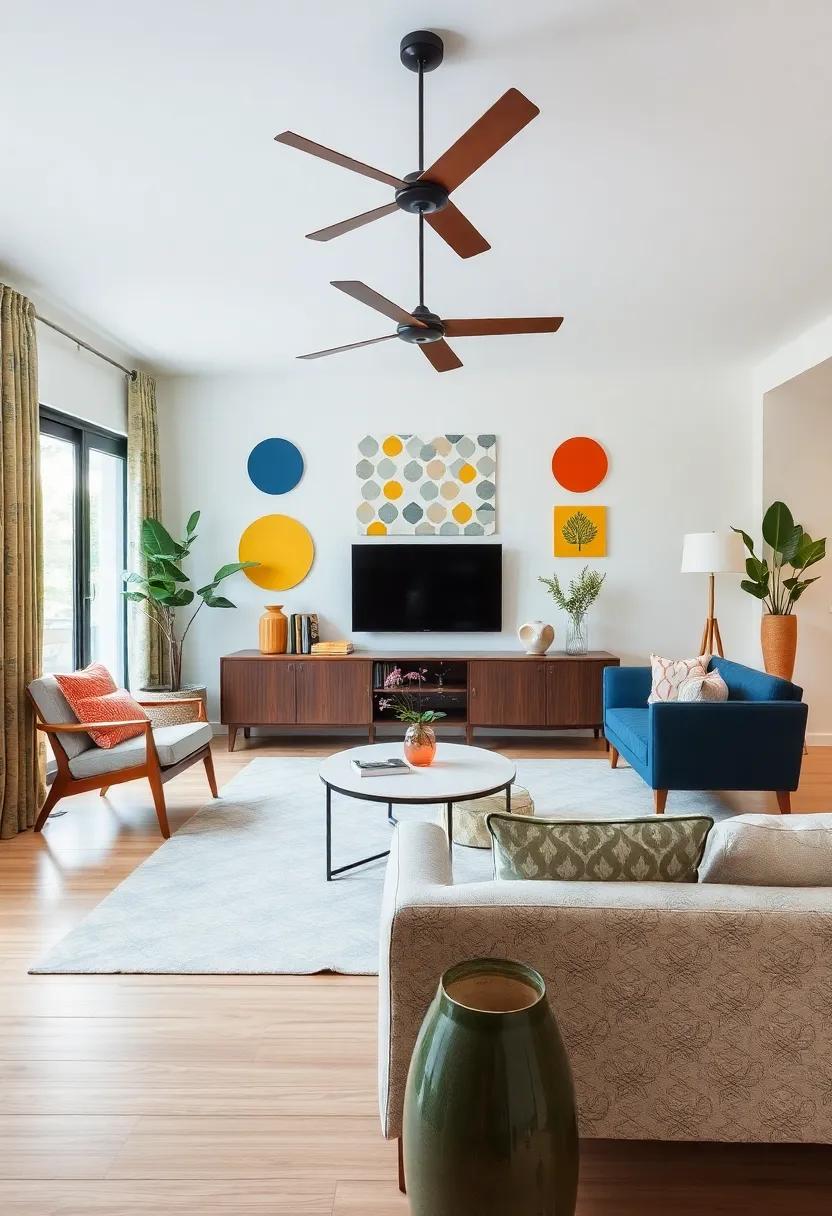
With the resurgence of mid-century aesthetics, mixing and matching playful patterns can breathe new life into your living room.Achieving an eclectic yet cohesive look involves understanding the harmony between bold motifs. Start by choosing a color palette that reflects the era—think mustard yellows,teal blues,and earthy browns.Once you have your base colors, layer different patterns, such as:
- Geometric prints: Think forms like diamonds and triangles that nod to mid-century design.
- floral motifs: Vintage-inspired florals can add a touch of softness to your space.
- Stripes: Incorporating stripes in various directions can create visual interest without overwhelming the eye.
To ensure a smooth flow between these varied elements, consider their scale and proportion. Pair larger patterns with smaller ones to create a balanced look. For instance, if you have a bold, oversized geometric rug, offset it with a more subtle floral or striped cushion. You can even check out the synergy of your chosen designs with a simple table:
| Pattern Type | Recommended Pairing |
|---|---|
| Geometric | Floral |
| Bold Stripe | Solid Color |
| Abstract Art | Simple Line Drawing |
By thoughtfully mixing and matching patterns, you can create an environment that not only pays homage to mid-century style but also showcases your unique flair.
Natural Elements: Integrating Wood and Greenery into Your Mid-Century Space

To bring warmth and comfort into your living space, incorporate natural elements that reflect the organic aesthetic of mid-century design. Wooden furniture with clean lines can serve as a stunning focal point, while accents in the form of wooden frames, shelves, or coffee tables reinforce the natural feel. Pair these elements with lush greenery to enhance the overall ambiance, creating a seamless blend of indoor-outdoor living. Consider adding:
- Large potted plants like rubber trees or monstera for a bold statement.
- Hanging planters that draw the eye upwards, adding dimension to the space.
- Succulent arrangements on coffee tables for a touch of charm with minimal upkeep.
Integrating these elements draws from nature’s palette and complements the vibrant patterns typical of mid-century decor. Select furnishings made from natural woods like walnut or teak, and finish off your look with textiles featuring bold, geometric prints, ensuring that they harmonize with the organic textures around them. A well-placed side table or chair in a deep earthy tone can echo the warmth of your greenery while providing functionality. Use a table like the one below to contrast and highlight your color choices:
| Element | Color Palette |
|---|---|
| Wooden Furniture | Rich walnut,warm oak |
| Greenery | vibrant greens,deep earth tones |
| Textiles | Bold oranges,soft yellows |
Lighting the Way: Selecting Fixtures That Capture the Mid-Century Spirit
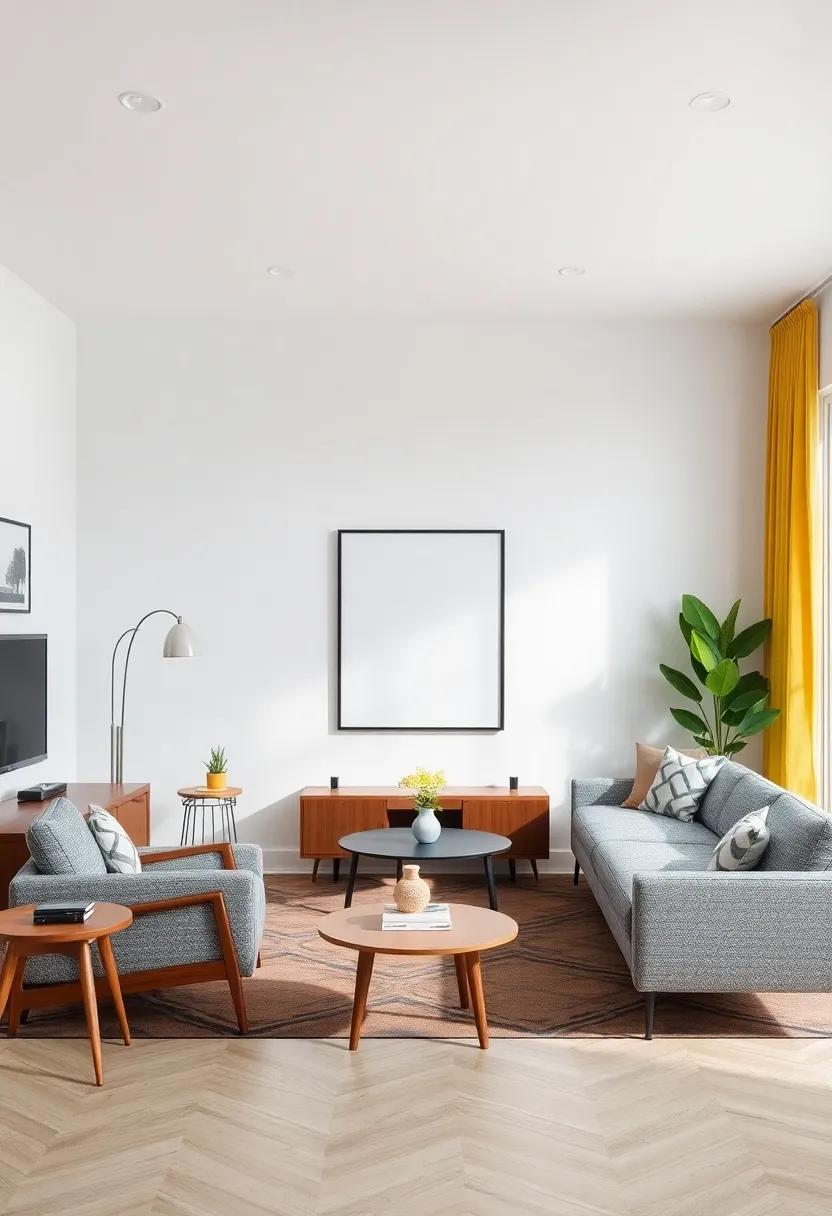
When it comes to illuminating your mid-century living room, the right light fixtures can serve as striking focal points while also complementing your bold patterns and colors. Look for pieces that embody the characteristic simplicity and smooth lines of the era, such as suspension lamps and arc floor lamps. Key elements to consider include:
- Materials: Opt for metal finishes like brass or chrome, which blend effortlessly with wooden elements.
- Shapes: Embrace geometric designs and organic forms that draw the eye and accentuate your room’s style.
- colors: Choose fixtures in warm tones like mustard yellow and olive green or vibrant hues that pop against neutral backgrounds.
In addition to standalone lighting, integrating your fixtures with the overall decor is paramount in creating a harmonious space. Consider using a mix of tabletop lamps and statement chandeliers to enhance depth and dimension. The following table highlights popular mid-century inspired lighting styles to consider:
| Style | Key Features |
|---|---|
| pendant lights | Simple yet striking; often with colorful glass shades. |
| Arc lamps | Provides overhead lighting while maintaining a low profile. |
| Sputnik chandeliers | Starburst designs that add drama and flair. |
Sustainable Choices: Opting for Eco-Friendly Decor in Modern spaces

When redesigning a mid-century living room, integrating eco-friendly decor not only elevates the aesthetic but also contributes to a sustainable lifestyle. Natural materials like reclaimed wood, bamboo, and organic textiles can add a touch of authenticity to bold patterns while minimizing environmental impact. Consider incorporating pieces that celebrate the essence of nature,such as handwoven rugs crafted from sustainable fibers or furniture made from responsibly sourced hardwood. By choosing items that are not only stylish but also maintain eco-conscious principles, you transform your space into an inviting retreat that reflects a broader commitment to the planet.
In addition to materials, designing with intention can further enhance your eco-friendly décor. Opt for vibrant wall art and upholstery made by artisans who utilize eco-friendly techniques, ensuring that your bold style aligns with your values. Here are a few suggestions for sustainable decor elements:
- Vintage Finds: Search local thrift shops for unique pieces that add character.
- Upcycled Furniture: Refurbish outdated furniture to create one-of-a-kind gems.
- Botanical Prints: Use nature-inspired art to blend seamlessly with mid-century patterns.
Below is a simple overview of sustainable decor ideas and their positive environmental impacts:
| Decor Element | Environmental Benefit |
|---|---|
| Reclaimed Wood Furniture | Reduces deforestation and waste. |
| Organic Cotton Textiles | Free from harmful pesticides and chemicals. |
| Solar-powered Lighting | Decreases reliance on fossil fuels. |
Functional Elegance: Balancing Aesthetics with Practical Living Solutions

The revival of mid-century living rooms is more than just a nostalgic nod to the past; it’s about creating spaces that embody both style and practicality. Think about how bold patterns can seamlessly blend with functional furniture that doesn’t sacrifice comfort for aesthetics. Embracing elements like vibrant geometric wallpapers, unique textured fabrics, and striking color combinations can transform an area, making it not only visually captivating but also inviting and warm. Consider these essential features when reimagining your space:
- Versatile furniture: Pieces that serve multiple functions without compromising on style.
- Natural materials: Incorporating wood and fibers that add warmth and tactility.
- Strategic layout: Arranging furniture to promote both conversation and movement.
Mid-century design is known for its clean lines and emphasis on form, yet integrating bold patterns elevates this aesthetic to new heights. The key is finding the right balance between the striking visuals of patterns and the understated elegance of minimalism. Consider pairing a vibrant, patterned rug with sleek, neutral furnishings to create a dynamic yet functional environment. A carefully crafted combination can then lead to an energizing atmosphere where family and friends can comfortably gather. Here’s a speedy look at how to achieve that synergy:
| Pattern | Furniture Style | Color Palette |
|---|---|---|
| Geometric Shapes | Mid-Century Sofa | Earthy Tones |
| Floral Prints | Wooden Armchair | Bold Accents |
| Abstract Designs | Minimalist Coffee Table | Soft Pastels |
accessorizing with Flair: Decorative Items That Make a Statement
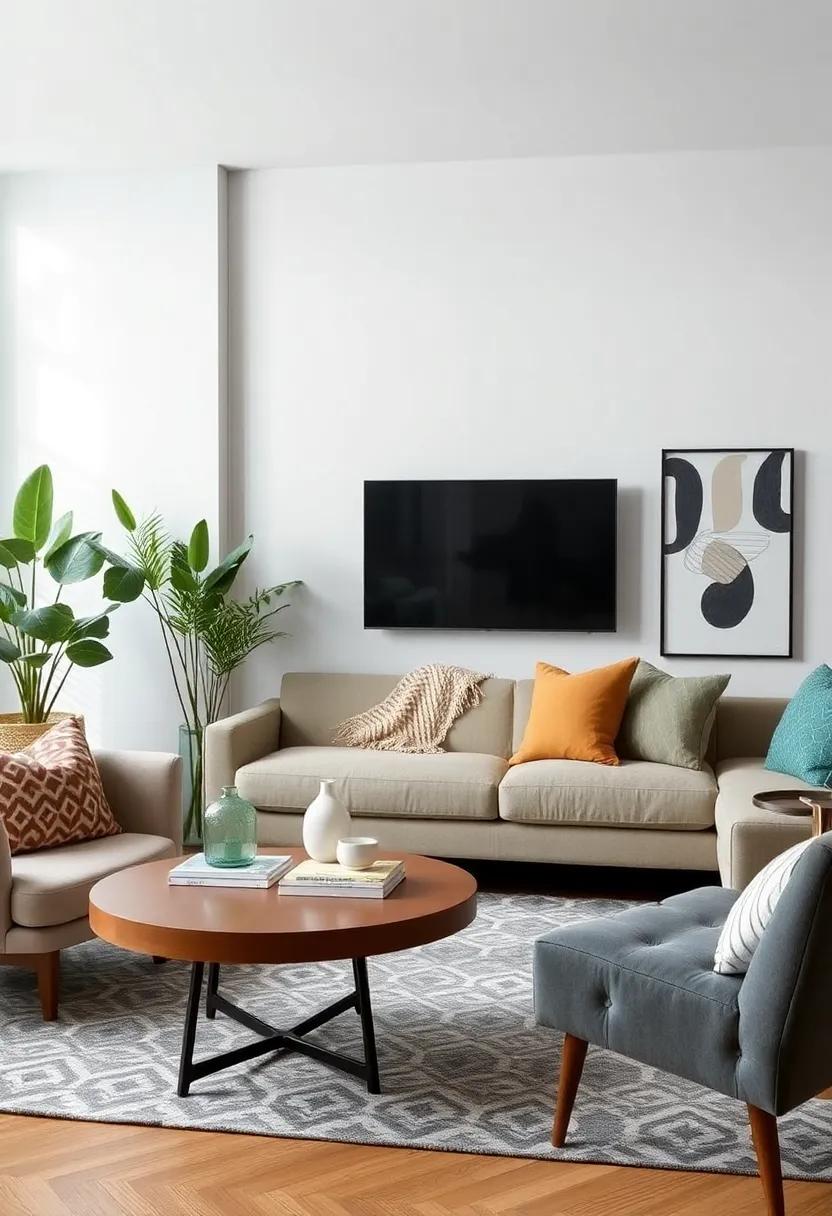
Transform your mid-century living room into a lively retreat by incorporating decorative items that not only complement but elevate your bold patterns. Think of geometric vases in vibrant hues—these can serve as artistic focal points on shelves or coffee tables. Layering texture with bold-patterned throw pillows can bring depth to your seating, while a striking area rug featuring a classic pattern can ground the room, seamlessly tying together eclectic decor pieces. Consider infusing an artful twist with quirky sculptures or whimsical wall hangings that speak to the playful essence of mid-century style.
As you curate your space, prioritize items that echo the essence of functionality fused with artistry. Look for statement lamps with unique bases or shades that create an inviting glow, adding warmth to the overall aesthetics. Incorporating a mixture of materials—such as metallic accents, rich woods, or textured ceramics—can invigorate the space while maintaining an air of sophistication. Below is a simple guide to help you choose pieces that will resonate with your vision:
| Decor Item | Function | Style Tip |
|---|---|---|
| Geometric vases | Artistic display | Mix sizes for visual interest |
| Bold-patterned throw pillows | Comfort and aesthetics | Layer with solid colors |
| Statement lamps | Lighting | Choose unique shapes |
| area rugs | Ground the space | Opt for contrasting or complementary patterns |
| Whimsical wall art | Personal expression | Rotate seasonally for fresh looks |
Area Rugs: Defining Spaces with Graphic Designs and Textures
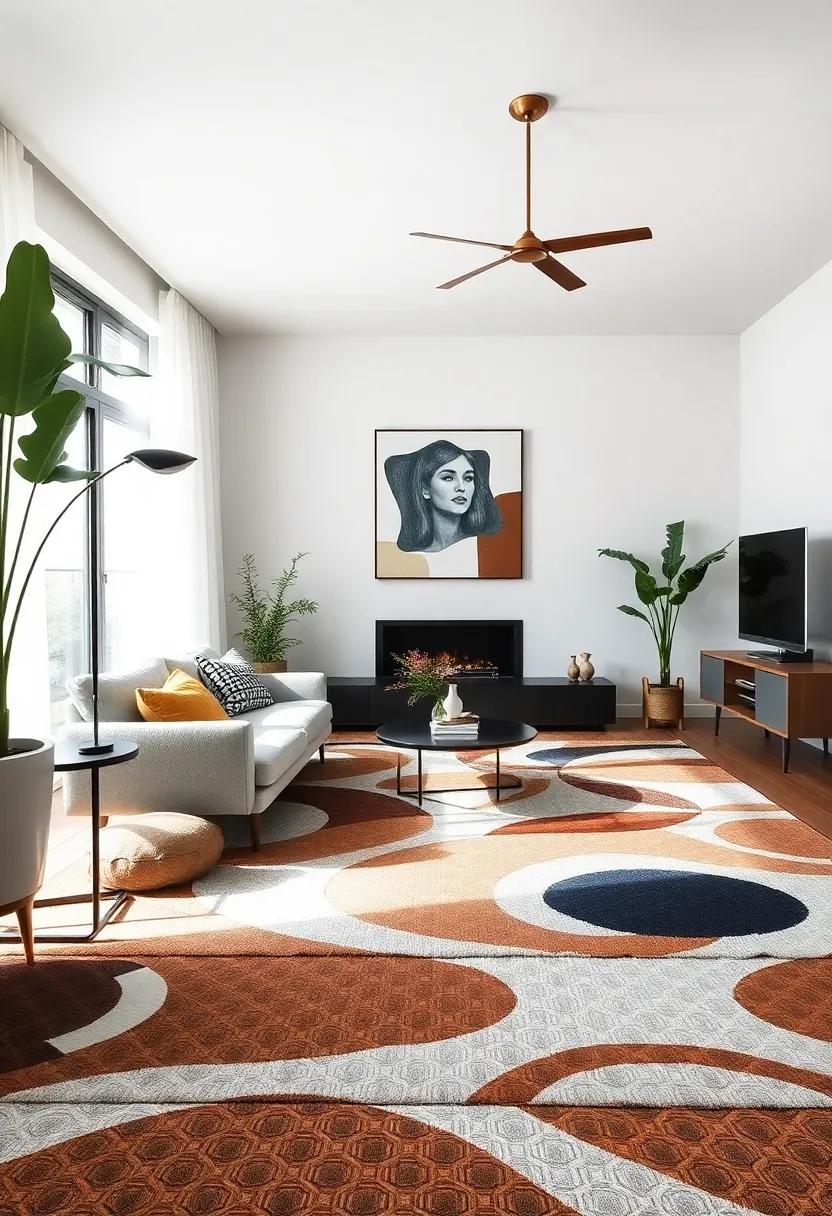
In the realm of interior design, area rugs serve as pivotal elements that can transform a living room from ordinary to extraordinary. These textile wonders not only provide comfort but also add a layer of artistry through their intricate patterns and textures. Bold geometric designs reminiscent of mid-century aesthetics can encapsulate the essence of an era known for its innovation and style. Opting for a rug with striking shapes or color combinations can effectively create a focal point in the room, guiding the eyes and enhancing the overall visual narrative.
When selecting an area rug, it’s essential to consider both its design and texture. Look for options that boast a rich tactile experience, combining materials like wool, jute, or synthetic fibers to convey depth. Incorporating a mix of textures can amplify the room’s appeal, leading to a harmonious balance between comfort and aesthetic. Here are a few key features to keep in mind when choosing a statement rug:
- Color Scheme: Coordinate with existing palettes to enhance unity.
- Pattern Scale: Consider large patterns for spacious rooms, smaller for compact areas.
- Durability: Select materials that withstand foot traffic and wear.
Window Treatments: Bringing in Light While Enhancing Bold Patterns
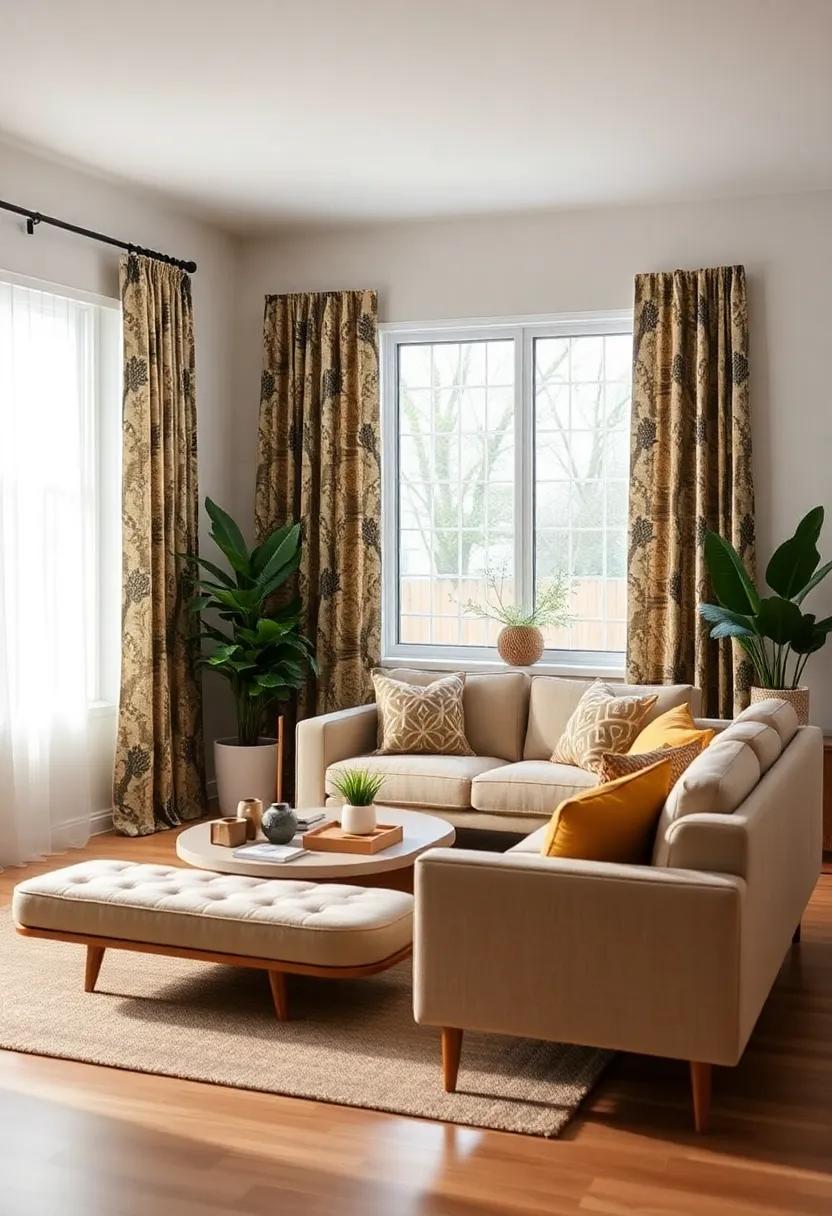
When revitalizing a mid-century living room, the right window treatments are crucial for illuminating the space while highlighting the vibrant patterns characteristic of this design era. Opt for sheer fabrics or light-filtering drapes that effortlessly engage with sunlight, casting gentle shadows and enhancing the room’s atmosphere. Consider styles such as:
- geometric prints that echo mid-century design motifs
- Bold colors that complement existing furniture
- layered treatments combining shades and curtains for depth
Incorporating blinds or shades offers adaptability, allowing you to control light levels while showcasing striking wallpaper or art. For a unified look, select window treatments that harmonize with other bold elements in the room, like patterned rugs or accent chairs. Use the following table to explore options for blending styles and colors:
| Treatment Type | Color Palette | Pattern Style |
|---|---|---|
| Sheer Curtains | Pastel Hues | Floral |
| Roman Shades | Earth Tones | Geometric |
| Roller Blinds | Vibrant Colors | Abstract |
Seating Arrangements: Designing comfortable and Stylish Conversation Areas
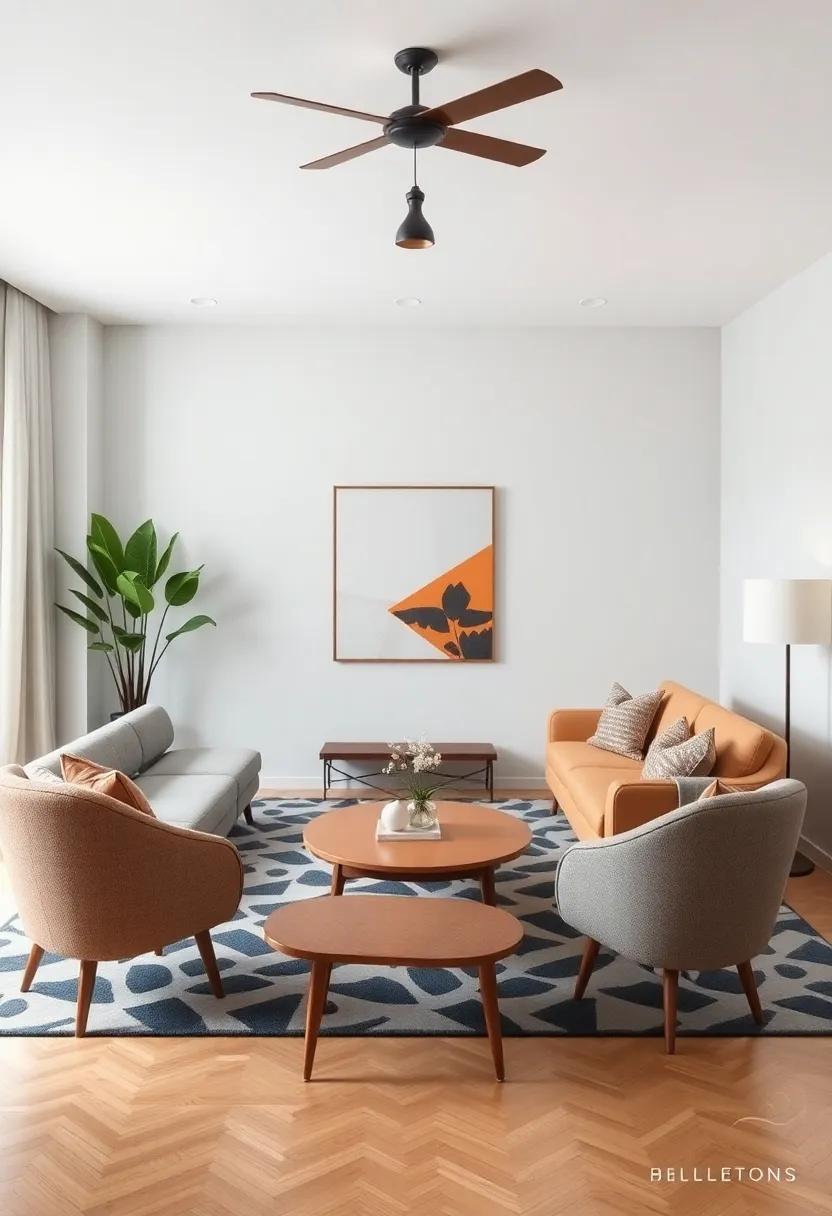
When revamping a mid-century living room, the seating arrangement plays a crucial role in setting the tone for the space. Layering textures is essential, so consider combining various materials such as plush velvet sofas, elegant leather chairs, and comfortable woven poufs. To enhance visual interest, you can incorporate bold patterns through accent cushions or throws, mixing geometric shapes with organic motifs. A central coffee table, perhaps made of polished wood or glass, can anchor the area, providing both functionality and a stylish focal point.
Creating intimate conversation zones can be achieved by placing seating in a circular or semi-circular formation, encouraging engagement. Colorful area rugs can define these spaces, offering warmth and comfort while echoing the vibrant patterns that define mid-century design. Consider these elements for an inviting conversation area:
- Your seating selection: Mix and match chairs and sofas.
- Accent tables: Use unique side tables to enhance functionality.
- Lighting: Incorporate stylish lamps to set the mood.
Creating a Relaxing Reading Nook with Vintage Inspiration

To create a reading nook that embodies vintage inspiration, start by selecting a cozy chair that may have once graced the living rooms of the mid-century. Look for pieces with vibrant upholstery featuring bold geometric patterns or rich colors, like mustard yellows or deep greens.Adding a small, round side table with a retro design can serve as the perfect perch for your favorite novels and a steaming cup of tea. To enhance the atmosphere, incorporate a warm light source, such as an antique floor lamp with a fabulous arc, casting soft glows across your nook while inviting you to dive into another world. Consider adorning the walls with a mix of framed vintage book covers or art prints that spark your imagination.
Accessories play a crucial role in defining the aesthetic of your nook. Subtle accents can be added with textured throw pillows and a chunky knit blanket to infuse warmth. Choose a patterned rug that echoes the vintage flair, ensuring it ties the surrounding space together harmoniously. Incorporate a few plants or fresh flowers to lend a touch of life and color to your nook, ensuring they don’t overpower the space. To maximize storage and accessibility,consider a vintage-style bookcase,where you can arrange your beloved books alongside decorative bookends for extra charm.The goal is to create an inviting oasis that beckons you to unwind, read, and savor every moment spent in your carefully curated retreat.
Integrating Technology: Blending Modern Devices with Classic Design
Incorporating the latest technology into your mid-century living room can elevate the aesthetic while maintaining the essence of classic design.Opt for devices that blend seamlessly with bold patterns and vintage furnishings. Consider using smart speakers that mimic the look of classic record players or streaming devices that can be housed in retro-style consoles. These modern gadgets can be artfully integrated, ensuring they complement the vibrant hues and intricate patterns of the era’s design without overwhelming the space.
Moreover, using technology to enhance comfort can be achieved with smart lighting systems that adapt to various moods. Imagine a cozy evening where warm, dimmable lights highlight the bold geometric shapes of your wallpaper. Introducing a digital art frame allows you to switch up your wall décor effortlessly, showcasing everything from abstract pieces to iconic mid-century artwork without sacrificing sophistication.To help illustrate the possibilities, consider the following elements that can harmoniously unite technology with trendy mid-century aesthetics:
| Element | Description |
|---|---|
| Smart Speakers | Retro designs that provide high-quality sound. |
| streaming Devices | Styled to blend with vintage furniture. |
| Smart Lighting | Adjustable settings to match your décor mood. |
| Digital Art Frames | Display rotating art pieces reflecting mid-century flair. |
Flooring Options: Choosing the Right Surface for a Mid-Century Feel
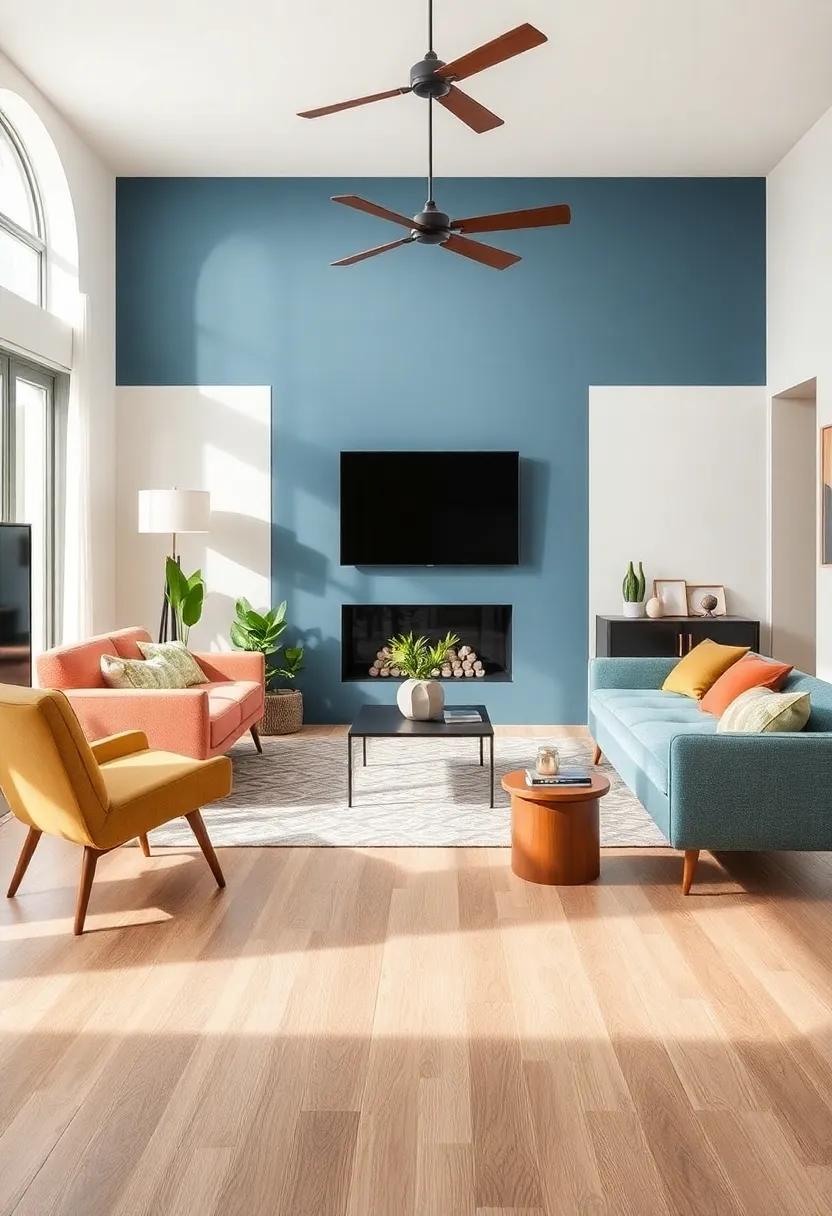
When aiming to capture the essence of mid-century design, flooring is a pivotal element that can either enhance or diminish the overall aesthetic. One popular option is hardwood flooring, which epitomizes the clean lines and natural beauty characteristic of the era. Weather you choose a rich walnut or a lighter oak, the grain and texture offer a warm backdrop to bold patterns and vibrant colors. Additionally, parquet flooring can introduce a geometric flair, echoing the artistic sensibilities of mid-century architecture. For those who prefer a softer underfoot, consider cork or bamboo, which provide both sustainability and comfort while maintaining the style integrity.
To add more personality to your mid-century living space, carpet tiles in bold geometric patterns can be strategically placed to create visual interest. These tiles allow for versatility, as you can easily switch around colors or designs to refresh the look. Moreover, you coudl explore vinyl flooring options that mimic the appearance of classic ceramic tiles, perfect for a retro kitchen or dining area. Here’s a summary comparison of flooring materials ideal for a mid-century feel:
| Material | Pros | cons |
|---|---|---|
| Hardwood | Timeless aesthetic Durable |
Can be costly Requires maintenance |
| Parquet | Unique design Versatile angles |
Installation complexity |
| Cork | Eco-friendly Soft underfoot |
Vulnerable to water |
| Carpet Tiles | Easy to replace Variety of colors |
Can trap dust |
| Vinyl | Water-resistant Cost-effective |
Less durable than wood |
Complementing Architecture: Aligning Furniture with Home Features

When revamping a mid-century living room, one of the key aspects to consider is how furniture complements the architectural features of the space. Mid-century design is characterized by clean lines, organic shapes, and integration with nature, so selecting pieces that emphasize these elements can considerably enhance the overall ambiance. Choose furniture that highlights your home’s structural uniqueness, such as:
- Low-profile sofas to accentuate ceiling height and openness.
- Organic coffee tables to echo curved architectural lines.
- Wooden accents that reflect both warmth and craftsmanship.
Additionally, the placement of furniture should create a flow that invites conversation and interaction, respecting both the space and its features.Consider using a mix of color and texture to maintain the bold aesthetic that mid-century design embodies. Incorporating elements like:
- Textured throw pillows, which bring visual interest without overwhelming the space.
- Area rugs that define seating areas while introducing vibrant patterns.
- Statement lighting fixtures to draw the eye upwards and highlight architectural details.
To visually organise the arrangement of these pieces, a simple table can help illustrate the roles of different furniture items in a cohesive design approach:
| Furniture Element | Purpose | Suggested Style |
|---|---|---|
| Sofa | Seating and focal point | Low-profile with clean lines |
| Coffee Table | Functional centerpiece | Organic shape, wooden or glass |
| Accent Chairs | Add character and comfort | Bold patterns or color |
Creating a Harmonious Flow: Connecting Architecture with Interior Design
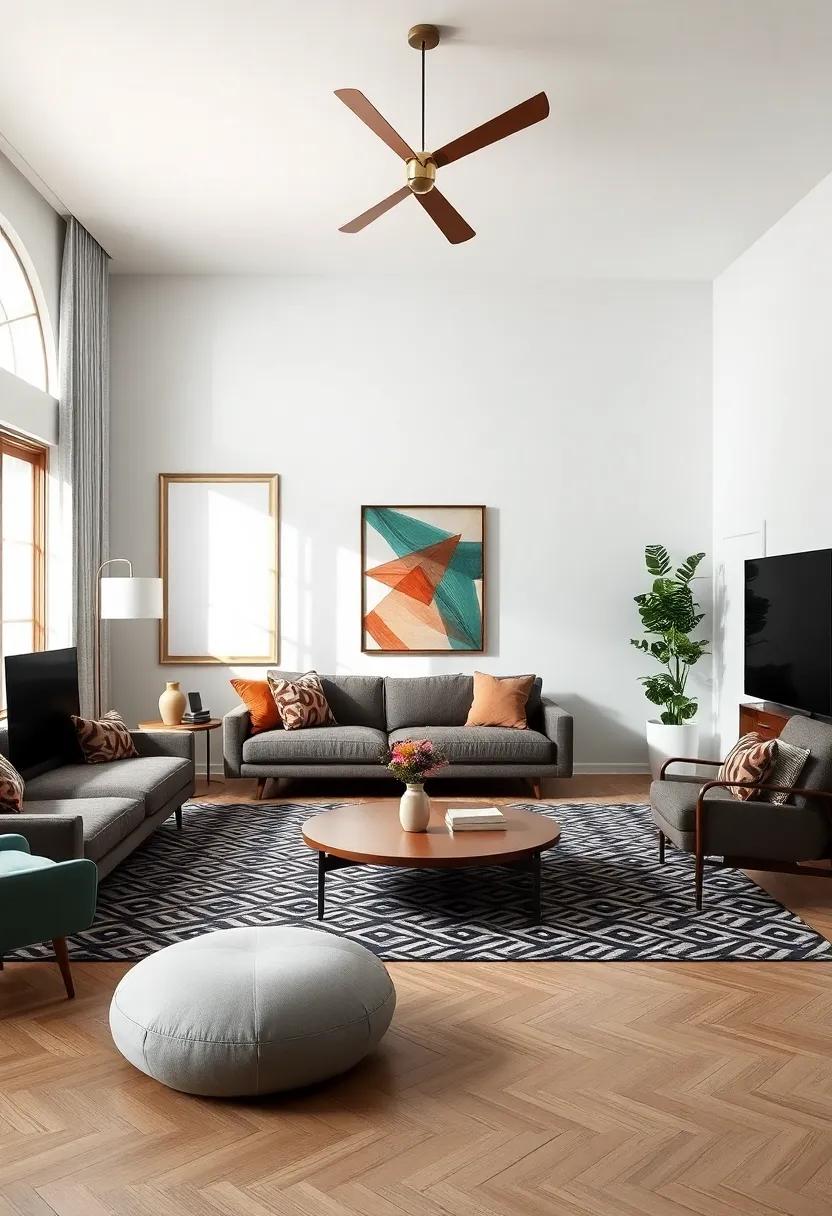
Integrating architecture with interior design creates a seamless experience that enhances the overall aesthetic and functionality of a living space, especially in mid-century modern homes.This iconic style celebrated clean lines, organic forms, and open spaces, often creating a backdrop that invites bold, vibrant expressions through interior design. To achieve harmony between the structural elements and the decor, consider the following design principles:
- choose Complementary colors: Pairing warm woods with bright colors and rich textures can evoke a sense of nostalgia while remaining fresh.
- Incorporate natural Light: Large windows and open layouts encourage natural light, enhancing both architectural features and interior décor.
- Balance Bold Patterns: Use vibrant textiles and wall art sparingly to avoid overwhelming the space while still making a striking statement.
Maintaining this connection requires mindful selection of furnishings and decor that respect the architectural integrity of the home. Emphasizing retro-inspired furniture alongside vintage accessories can breathe life into the mid-century aesthetic. A well-planned design scheme might include:
| element | Example |
|---|---|
| Fabrics | geometric prints, velvet cushions |
| Furniture | Teak wood lounge chairs, sofa with tapered legs |
| Accessories | Brass accents, abstract art |
Cultural Influences: Drawing Inspiration from Global Mid-Century Movements
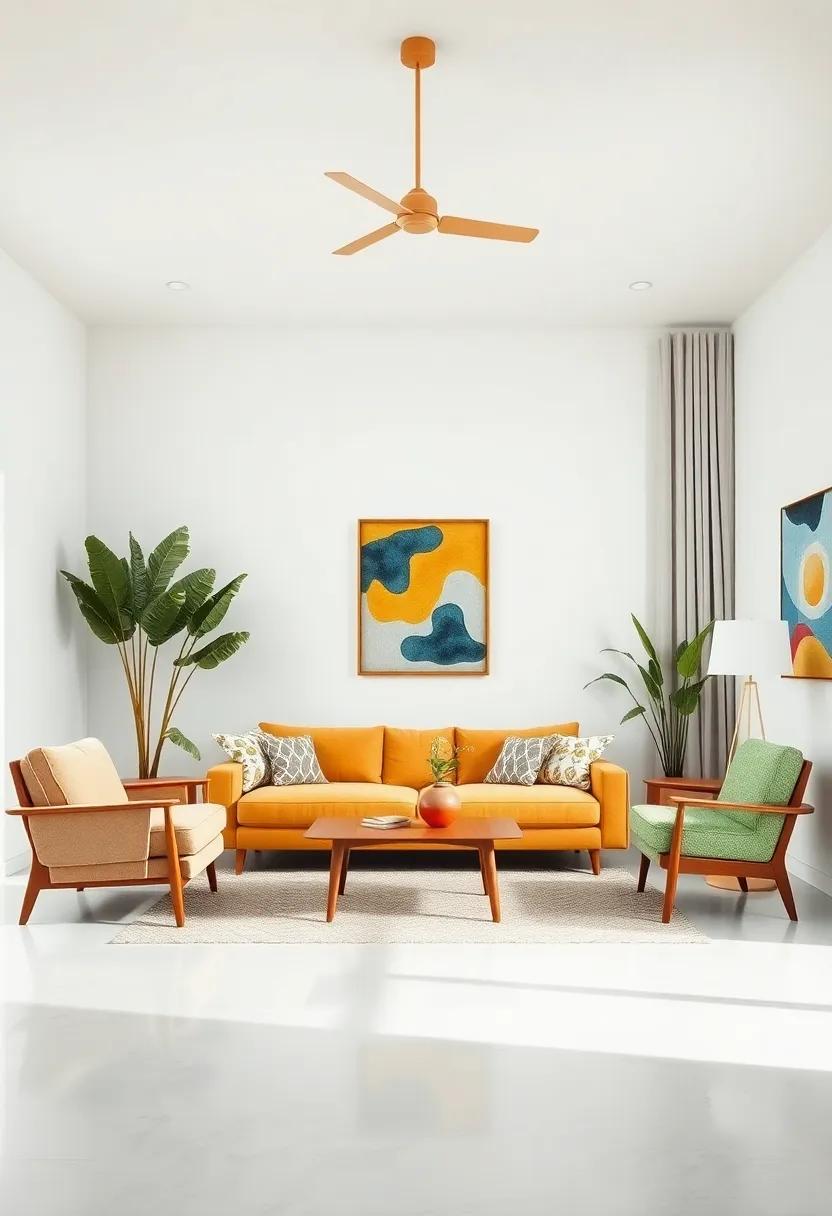
Throughout the mid-20th century, various global movements played a pivotal role in shaping design philosophies that embraced boldness and innovation. From the vibrant textiles of the Brazilian modernists to the minimalist aesthetics of Scandinavian design, designers drew heavily on cultural narratives and past contexts.This cross-pollination of ideas led to the creation of unique patterns that celebrated both form and function. Incorporating these influences into mid-century living rooms can foster an environment that is not only stylish but also tells a story of global heritage.
To effectively revive the essence of mid-century style, consider infusing your space with distinctive elements that encapsulate these cultural influences:
- Textiles: Invest in bold fabrics featuring geometric patterns, like the iconic designs of Marimekko that became popular during this era.
- color Palettes: Explore vibrant hues inspired by pop art,juxtaposing bright yellows and deep blues to create visual impact.
- Furniture Design: Choose pieces that reflect the ethos of mid-century minimalism while incorporating artisanal craftsmanship from around the globe.
| Design Element | Global Influence |
|---|---|
| Bold Patterns | Brazilian Modernism |
| Muted Earth Tones | Japanese Wabi-Sabi |
| Geometric Shapes | Mid-Century American |
Reviving Indoor-Outdoor Spaces: Seamlessly Merging Interiors with Nature
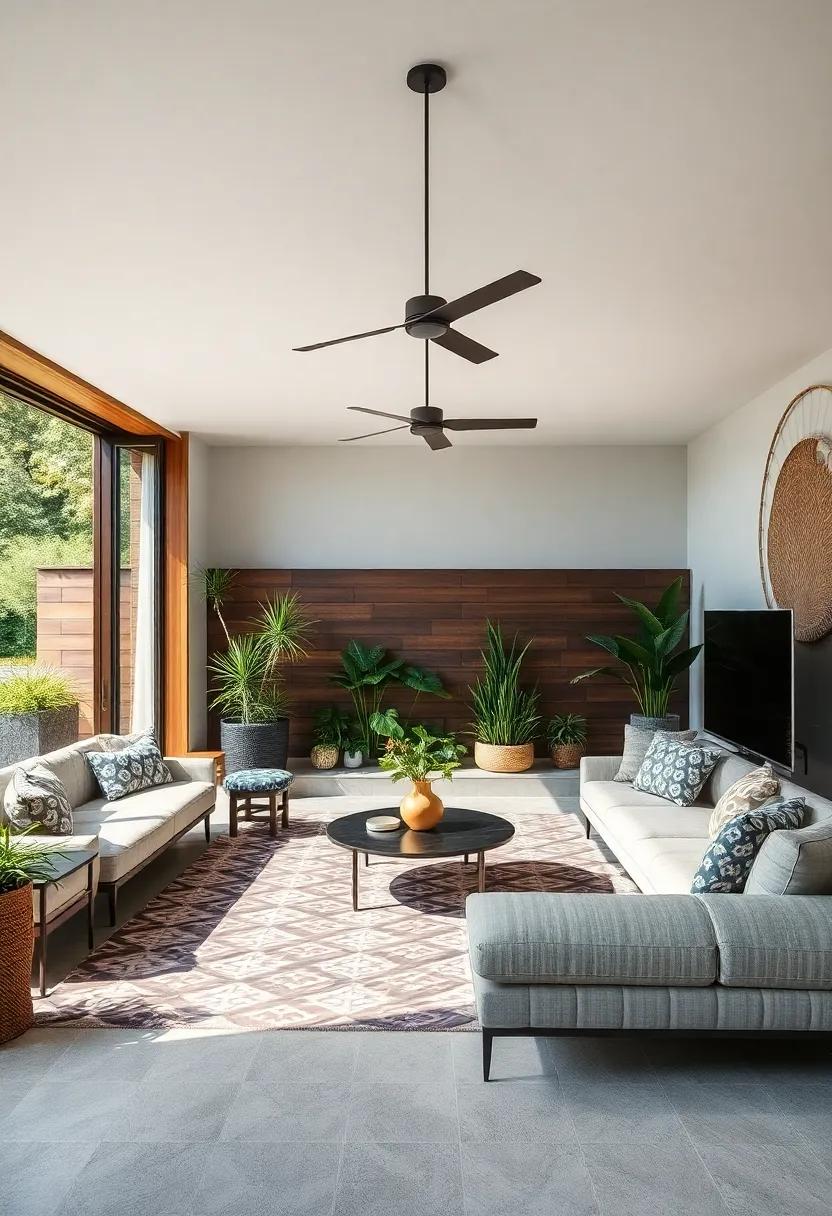
Incorporating nature into our living environments can dramatically enhance the overall ambiance of mid-century living rooms. One of the most effective ways to achieve this is by utilizing large windows and sliding doors that create a fluid boundary between the inside and outside. By selecting furniture pieces that reflect the organic shapes and textures of the natural world, you can create a harmonious balance between your living space and its surroundings. Consider adding indoor plants or vertical gardens to introduce vibrant colors and textures, which naturally breathe life into the area and improve air quality.
Another vital aspect of merging indoor and outdoor aesthetics is the strategic use of color and pattern. Bold geometric patterns reminiscent of mid-century design can be executed in soft furnishings, such as cushions, throws, and rugs, which can echo the earth’s palette. To complement this, a well-curated selection of accessories can also play a pivotal role. Adding elements such as rustic planters, oversized woven baskets, or art pieces made from natural materials can further create a cohesive blend with the outdoors. Below is a simple table to illustrate the ideal accessories for your revamped living area:
| Accessory Type | Material | Suggested Color |
|---|---|---|
| Planter | Ceramic | Terracotta |
| Throw Pillow | Fabric | Bold Stripes |
| Wall Art | Canvas | Earthy Tones |
Fine Details: Focusing on Small Decor Elements for Maximum Impact

When revamping a mid-century living room, it’s frequently enough the small decor elements that elevate the space from ordinary to extraordinary. Consider incorporating vibrant throw pillows adorned with geometric patterns or bold,textured rugs that ground the design. These elements can serve as a focal point, instantly drawing the eye and creating a cozy atmosphere. The use of colorful vases or quirky decorative bowls can further spice up the arrangement, adding layers of interest without overwhelming the palette. A carefully curated selection of art pieces, even if they’re just a few strategically placed wall hangings, can provide a personal touch while enhancing the room’s character.
Lighting also plays a crucial role in showcasing these fine details. Think outside the box with mid-century modern candlesticks or unique table lamps featuring captivating shapes that reflect the bold patterns throughout the space. To help visualize,here’s a simple table highlighting essential decor elements that can make a significant impact:
| Element | Impact |
|---|---|
| Throw Pillows | Introduce color and pattern |
| Textured rugs | Add warmth and define spaces |
| decorative Vases | Enhance with style and flair |
| artwork | Personalize the space |
| Lighting Fixtures | Create ambiance and highlight features |
Timeless Versatility: choosing patterns That Endure Through Changing Tastes
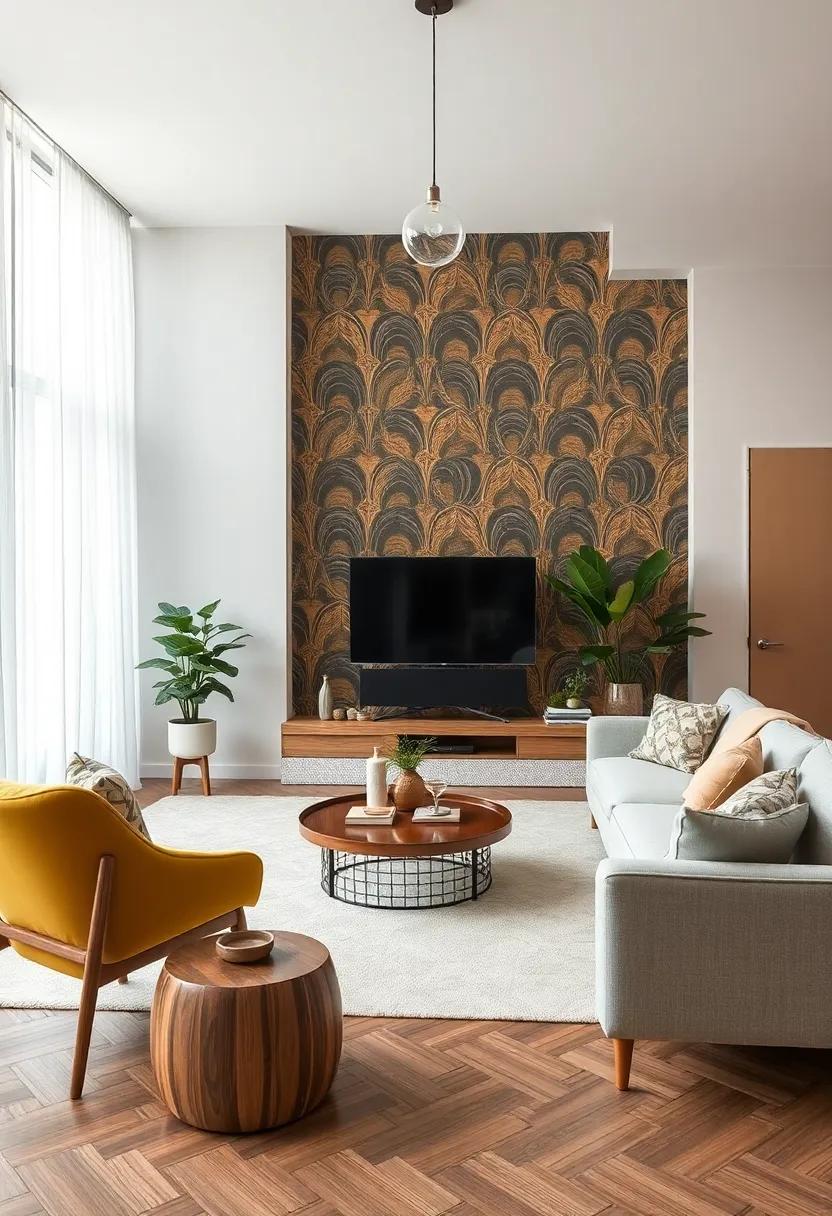
When selecting patterns that stand the test of time, it’s essential to focus on designs that harmonize with both the past and the contemporary. Mid-century patterns often integrate organic shapes, geometric lines, and vibrant colors, creating a visual dialogue that resonates with various décor styles. Consider these enduring pattern choices:
- Geometric Motifs: Bold triangles and circles that evoke a sense of structure
- Floral Prints: Simplified blooms that add life without overwhelming the space
- Stripes: Versatile and always in style, perfect for creating a sense of movement
- Abstract Designs: Avant-garde prints that invite conversation and creativity
to further enhance the impact of your living room, mix patterns intentionally. Pair large prints with smaller ones to create balance and interest.Utilize a color palette derived from your furniture for a cohesive look; this synergy enhances the overall aesthetic, making your space feel curated rather than chaotic. Below is a simple guide for mixing patterns effectively:
| Pattern Type | Best Pairing Techniques |
|---|---|
| Bold Geometric | pair with small floral or subtle stripes |
| Large Floral | Combine with solid colors or muted abstracts |
| Stripes | Match with polka dots or contrasting colors for pop |
Concluding Remarks
As we wrap up our exploration of bold patterns and the unique charm they bring to mid-century living rooms, it’s clear that these vibrant designs are more than just a nod to nostalgia—they’re a festivity of creativity and individuality. By integrating these striking patterns into your space, you not only pay homage to an iconic design era but also breathe new life into your home, transforming it into a personal sanctuary that reflects your style and spirit.
Whether you choose to go all out with geometric prints or opt for a subtler approach with playful accents, the key is to embrace the fearless spirit of mid-century design. Let your imagination guide you, and remember that the most compelling living rooms are those that tell a story—your story.
So, gather your inspiration, play with colors and shapes, and turn your living space into a masterpiece of bold expression. After all, in the world of design, there’s no rule against being a little daring—sometimes, it’s the boldest strokes that create the most harmonious canvas. Happy decorating!
As an Amazon Associate I earn from qualifying purchases.
 darbylanefurniture.com Interior design ideas with the latest interior inspiration
darbylanefurniture.com Interior design ideas with the latest interior inspiration
